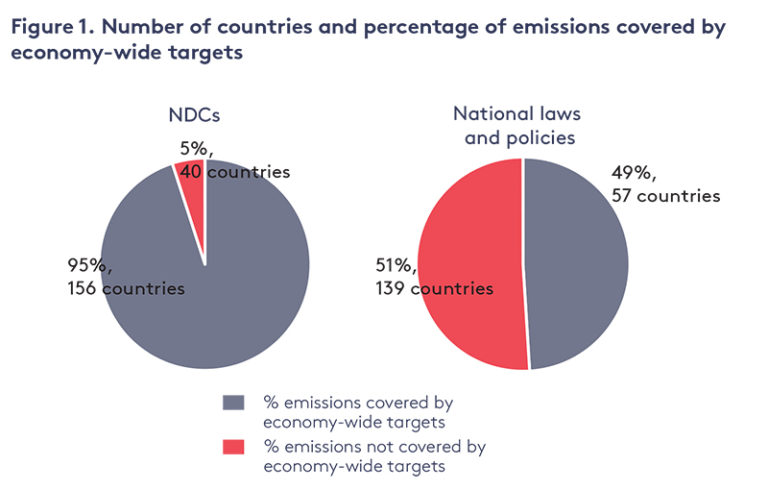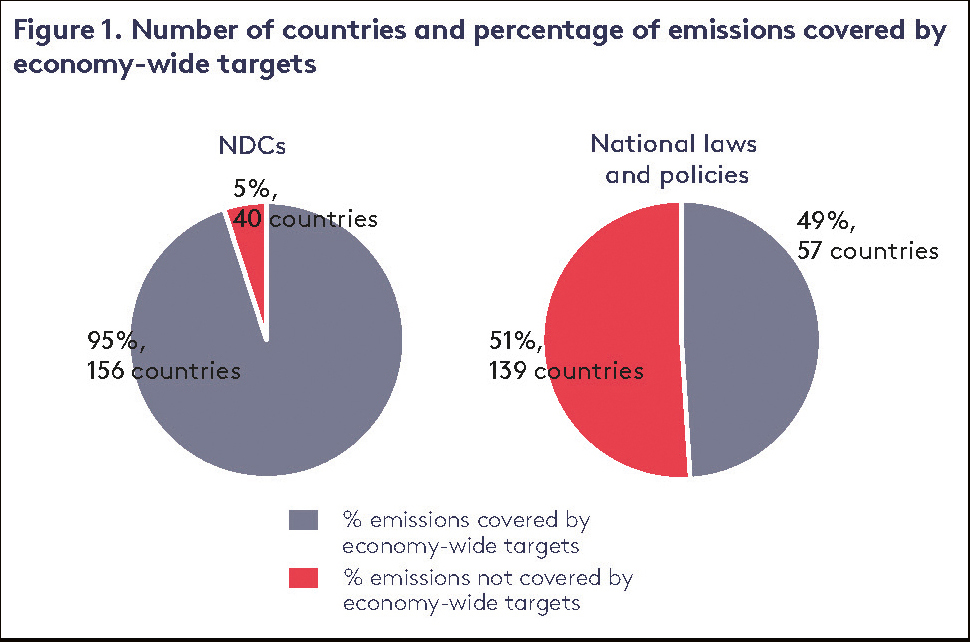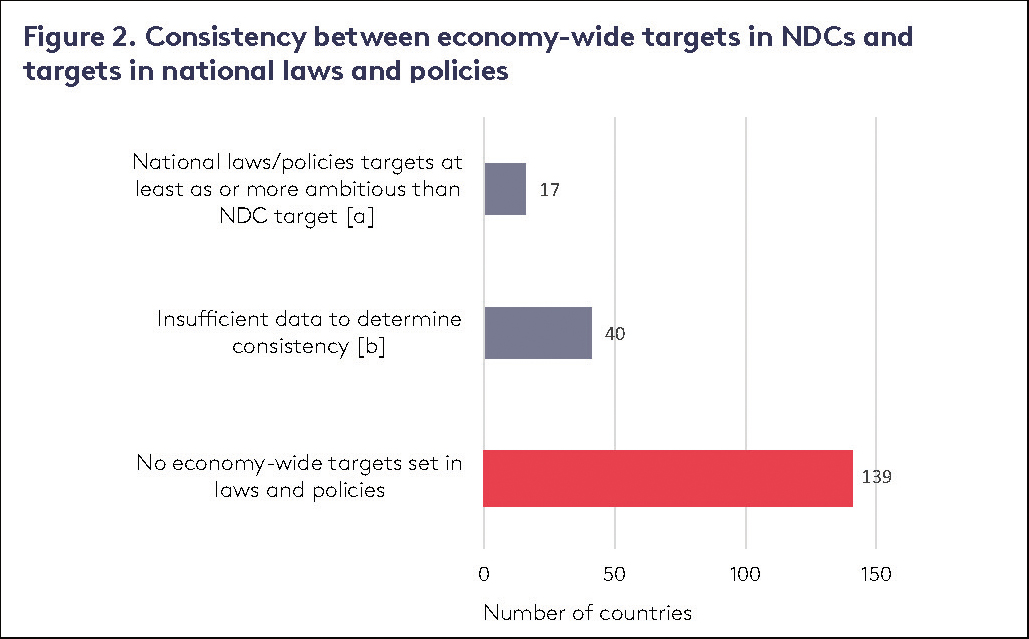Aligning national and international climate targets

Download
Quantified national targets are crucial to the credibility of climate change policies – for design, implementation, tracking and revision. Setting robust, consistent and measurable domestic targets informs the questions posed by the international Talanoa Dialogue process to monitor the achievement of the Paris Agreement on climate change: ‘where are we?’, ‘where do we want to go?’, and ‘how do we get there?’.
This policy brief compares the quantified targets in countries’ Nationally Determined Contributions (NDCs) to the Paris Agreement and those in national laws and policies. Drawing on data from the Grantham Research Institute’s Climate Change Laws of the World database and the World Resources Institute’s ClimateWatch platform, it offers insights about their consistency in terms of timeframes and definitions.
Key messages
- Setting robust targets in national laws and policies is crucial to the credibility of countries’ commitments to the Paris Agreement, as set out in their Nationally Determined Contributions (NDCs).
- Yet while 157 of 197 Parties to the Agreement have set economy-wide emissions reduction targets in their NDCs, only 58 have done so within national laws or policies; only 17 of those are consistent with targets set in the NDCs.
- For the rest of the 58, there is insufficient data for comparison.
- The lack of targets and inconsistencies create doubts about the likelihood of realising the goals of the Agreement.
- 140 countries have set national sector-specific targets, mostly relating to mitigation of emissions from energy, transport, and land use, land-use change and forestry (LULUCF).
- Adaptation targets remain under-addressed both in NDCs and in national laws and policies.
- More than 60% of economy-wide and sectoral targets in national laws and policies are set to 2020, while the target year for most NDCs is 2030.
- 14 countries have set 2030 targets in laws and policies, and 17 countries and the EU have set economy-wide targets in laws and policies to beyond 2030.
- Monitoring international progress on commitments is a challenge because in many cases there is insufficient data to determine the consistency between targets in national laws and policies and NDCs.
- Countries need to express their targets with more clarity and detail.
Recommendations for national governments
- All countries that have not yet done so should introduce quantified targets into national climate laws and policies.
- Most governments need to extend their targets to 2030, taking a cue from the NDCs.
- Adding clarity and detail to targets would improve the ability to track progress, compare nationally legislated targets with international commitments, and hold countries accountable for their pledges.



